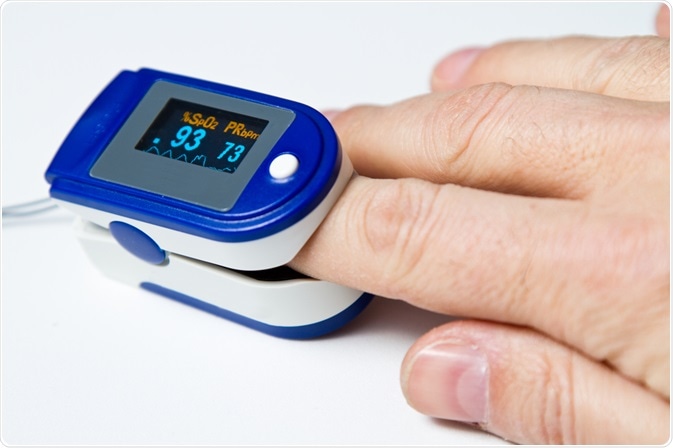How to Increase Oxygen Level
The blood in your body delivers oxygen to all or any of your cells. Once you breathe and draw fresh oxygen into your lungs, red blood cells bind with the oxygen and carry it through your bloodstream. On a cellular level, oxygen helps replace cells that wear out, supplies you with energy, supports your system, and more. That's why it is vital to form sure your blood oxygen level isn't too high or too low.
You can naturally increase your blood oxygen level or
discuss different methods together with your doctor to take care of or elevate
your blood oxygen level.
How is oxygen measured?
It uses a pulse oximeter to measure the amount of oxygen in the blood, also known as oxygen saturation. It is a small device that clips to your finger (or another part of your body) and determines the ratio of red blood cells that are carrying oxygen to people who are empty.
Checking or monitoring blood oxygen levels is non-invasive and painless. There are not any known risks or dangers of employing a Pulse Oximeter to live your blood oxygen level.
A pulse oximeter emits light that passes through your
fingernail, skin, tissue, and blood to a sensor on the opposite side. The
device measures what proportion light skilled without being absorbed by tissue
and blood. It then uses that measurement to calculate what proportion oxygen is
in your blood.
What
Are Typical Levels of Blood Oxygen?
Your blood oxygen level helps you recognize how well your
lungs, heart, and cardiovascular system work. A typical blood oxygen level for
a healthy person ranges between 95% and 100%. This suggests that almost all of
the red blood cells are carrying oxygen to your cells and tissues. It's normal
for people living at higher altitudes or people with some sorts of chronic
illness — like Asthma, Emphysema, chronic obstructive pulmonary disease (COPD)—
to possess lower readings.
Low oxygen level, also called Hypoxemia, is taken into
account a reading between 90% and 92%. A reading this low means you would
possibly need supplemental oxygen or that there could also be challenges that
affect how your lungs function. A result below 90% indicates that you simply
should seek medical attention.
Tips to increase Your Blood Oxygen Level
You can increase the quantity of oxygen in your blood
naturally. Some ways include:
Change your diet: Antioxidants allow the body to use oxygen more efficiently by increasing the amount of oxygen used during digestion.
When looking to spice up antioxidant intake, the foods to specialize in are blueberries, cranberries, red kidney beans, artichoke hearts, strawberries, plums and blackberries, most of which may be consumed in various juices and smoothies. Another critical protein to think about are essential fatty acids like Vitamin F, which work to extend the quantity of oxygen the hemoglobin within the bloodstream can carry. These acids are often found in soybeans, walnuts and flaxseeds.
Get Active: Exercise is essential to a healthy life. Through aerobics, like simple walking, the body is in a position to raised utilize oxygen while removing waste through the systema lymphaticum . As recommended by the American Heart Association, half-hour each day of normal walking has greater effects on the cardiovascular system than spending an hour or more within the gym 2 to three times every week . apart from the physical health benefits, walking has been shown to enhance mood, confidence, and reduce stress.
Change your breathing: Regular lung exercises are essential for maintaining a healthy respiratory system. However, what is often an impediment to one’s breathing is that the method during which they breathe. It’s recently been discovered that sick people breathe using the upper chest and inhale more air, which causes reduced oxygen levels within the body. In contrast, the right method to proper breathing is slow, from the diaphragm, and thru the nose, instead of the mouth.
Air purification: Poor
air quality is a common cause of deterioration in COPD patients. due to this,
it's imperative to take care of the purest quality of air possible within the
house and workplace. There are variety of air purifiers on the market which will
filter the worst of our environmental pollutants. Another useful
"low-tech" method for reducing air pollution and purifying oxygen is
beeswax candles. Unlike traditional candles, beeswax candles don't emit smoke.
Instead they produce negative ions that help within the removal of pollution.
Open windows or breathe fresh air: Something as simple as opening your windows or going for a brief walk increases the quantity of oxygen that your body brings in, which increases overall blood oxygen level. It also has benefits such as better digestion and more energy.
Hydrate: The physical body is roughly 60 percent water, so it can not be understated how critical water is to how the body functions: allowing body cells to grow, lubricating our joints and regulating body temperature. When looking to get the complete benefits of oxygenation, drink filtered water. Reconstituted water or ionized water is composed of micro clusters with smaller water molecule groups. This ensures a high level of hydration and oxygen supply at the cellular level. Remember, beverages containing caffeine, alcohol, and high-sodium foods can dehydrate your body. Therefore, please carry water with you throughout the day and develop a habit of drinking it throughout the day. Health professionals recommend 8 8-oz. glasses of water every day.
Quit smoking: After only fortnight of being cigarette-free, many of us find that both their circulation and overall oxygen levels improve significantly. Lung function can increase by up to 30% during this short time.
Grow some plants: Houseplants are shown to assist purify the air indoors. They remove CO2 and replenish a room's oxygen levels, making more oxygen available for your body to soak up.
Practice breathing exercises: Pulmonary rehabilitation experts recommend using simple breathing exercises like pursed-lip breathing and deep belly breathing to open your airways and increase the quantity of oxygen in your body.
You can use a pulse oximeter to see your blood oxygen
level reception, and use a number of these natural approaches to extend your
blood oxygen level on your own.
How
Accurate Are Pulse Oximeters?
Pulse oximeters make a useful gizmo in determining the
quantity of oxygen in your blood. However, sometimes reading errors happen.
Aspects that affect pulse oximeter readings include:
·
Patient movement
·
Some sorts of lighting
·
Skin pigmentation
·
Nail polish
·
Intravenous dyes
·
Exposure to carbon monoxide
If your doctor believes your blood oxygen reading from a
pulse oximeter is inaccurate, they'll order an blood gas study. This study
involves drawing blood out of an artery — usually in your wrist or arm — and
measuring the quantity of oxygen within the blood in millimeters of mercury (mm
Hg). The standard reading ranges between 80 and 100 mm Hg.
What
If My Blood Oxygen Level is just too Low?
If your blood oxygen level is low, your doctor may prescribe supplemental oxygen. This therapy provides more oxygen than normal indoor air and helps increase the oxygen content in the blood. It’s always delivered through a nasal cannula (a small plastic hose with prongs that enter your nostrils) or a face mask.
Doctors can give supplemental oxygen to a patient during
a short-term context — like within the aftermath of an accident or acute
illness — or long-term for people with diagnoses like COPD, Pulmonary fibrosis,
Cystic fibrosis, or Sleep disorder. Supplemental oxygen can
assist you feel better, recover more quickly, and stay active while managing
these conditions.














0 Comments